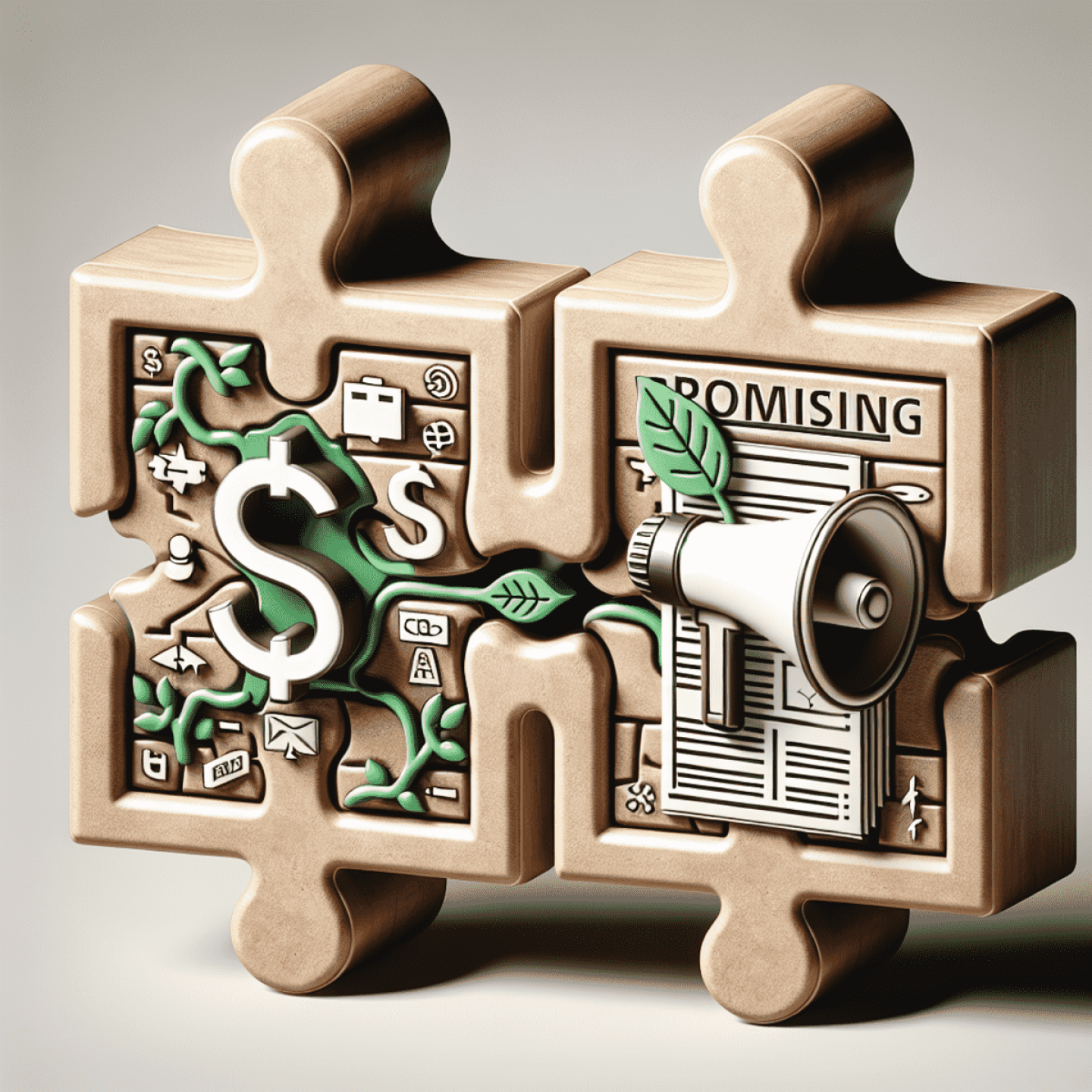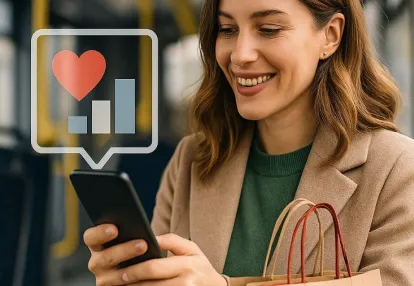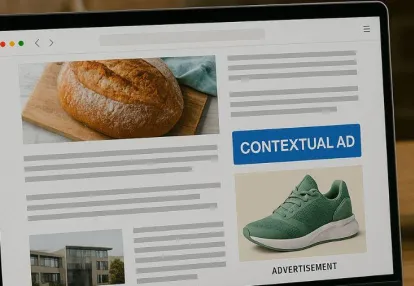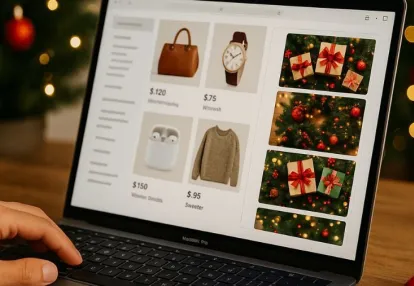
Our spy tools monitor millions of native ads from over 60+ countries and thousands of publishers.
Get StartedYou've probably come across the terms sponsored content and native advertising. But do you really know what they mean? Let's demystify sponsored content and understand what makes native advertising different.
These buzzwords are often used in the digital marketing world, but they aren't always clearly understood. Many people mistakenly believe that sponsored content and native advertising are the same thing. However, they are actually two distinct concepts with their own meanings and strategies that can benefit both advertisers and publishers.
At their core, sponsored content and native advertising are about more than just placing an ad on a website. They involve creating valuable connections with your audience through content that is relevant and interesting to them. But in order to make the most of these strategies, it's important to understand how they are different from each other and what specific advantages they offer.
Why is it so important to know the distinction between sponsored content and native advertising? The answer lies in choosing the right approach for your brand. By understanding the unique features, functions, and benefits of each strategy, you can:
Whether you're an advertiser looking to enhance your marketing efforts or a publisher seeking to maximize your earnings, this guide is designed to help you. In the upcoming sections, we'll explore in detail what sponsored content and native advertising entail, how they vary from one another, and when it's best to utilize each option.
Anstrex Native is one of several tools accessible to assist you in getting started with native advertising. With Anstrex, you can spy on profitable native ads created by your competition, allowing you to build winning campaigns while getting more value for your advertising spend. Let's delve into these concepts further and uncover the potential of digital marketing together!
When you hear native advertising, think of a chameleon. Much like a chameleon blends into its environment, native advertising integrates with the natural content and design of a website or platform. It's an online advertisement that doesn't scream "I'm an ad!", but subtly presents itself as part of the user experience.
Different from traditional advertising, native ads don't disrupt but rather enhance the user journey by providing relevant content in a non-intrusive way. You won't find these ads jarring your online experience with flashy banners or pop-ups. Instead, they're smoothly integrated into your website visit or social media scroll.
A prime example of a native advertising platform would be Taboola. Taboola excels at presenting "recommendations" that mirror the look and feel of the surrounding content on websites. You might have noticed these under headings like "You may also like" or "Recommended for you".
Native ads come in many forms, tailored to fit different platforms:
Each form has its function, designed to engage users without disrupting their online activities. Through this subtle approach, native advertising aims to increase brand visibility and recognition while providing value to the audience.
Sponsored content is a type of advertising where an advertiser pays a content creator or publisher to create and distribute media on their platform. This form of advertising is more direct and obvious compared to native advertising, focusing on detailed brand storytelling through articles, videos, pictures, and other multimedia formats.
Understanding the differences between native advertising and sponsored content is critical for marketers who want to craft successful campaigns. The distinctions are nuanced but significant, affecting the way audiences perceive and interact with the content.
Adopts the look, feel, and function of the media format in which it appears. It often manifests as articles, infographics, or videos that aim to match the style of the platform, thus providing a seamless user experience.
Usually more conspicuous as a distinct piece of content within a platform. While it may align with the publisher's style, it is typically clearly marked as 'sponsored' and stands out from the editorial content.
Often created by algorithms or automated systems that place ads based on content relevance and user behavior. This process does not typically involve much collaboration between advertisers and publishers.
Results from a collaborative effort where brands work closely with publishers or creators to craft content. This partnership ensures that the sponsored message aligns with both the brand's goals and the publisher's voice.
May not always be immediately recognizable as an ad due to its blending nature. However, regulations require that such content is identified using terms like "sponsored" or "promoted" to maintain transparency.
Generally includes a more prominent disclosure due to its direct nature. Publishers must make it clear that a brand has paid for the content, often by labeling it as 'sponsored content' or through explicit mentions within the text or video.
By distinguishing these elements, advertisers can better strategize their approach and ensure they meet both consumer expectations and regulatory standards. As digital advertising evolves, staying informed about these nuances allows for more effective planning and execution of marketing campaigns.
While native advertising and sponsored content have their unique characteristics, they share a few commonalities. Both these advertising strategies fall under the umbrella of paid media, which means advertisers pay to deliver their message to a wider audience.
Both native advertising and sponsored content are designed to generate traffic and attract potential customers. Whether it's an article sponsored by a brand on a popular news site or a recommended product on a social media feed, both aim to grab the attention of users and persuade them to click and engage.
Digital tools play a crucial role in creating, distributing, and measuring the performance of both native ads and sponsored content.
Both native advertising and sponsored content blend with the user experience instead of interrupting it. They aim to provide value-additional content that resonates with the audience's interests. As a result, they can reduce ad fatigue while boosting engagement rates.
Data-driven insights inform the creation of both native ads and sponsored content, ensuring that they reach the right audience at the right time.
In essence, while native advertising and sponsored content differ in execution style and format, they share several core principles in terms of objectives, tools used, user experience consideration, and data-driven approach. Understanding these shared features can help you choose the right strategy based on your brand's specific needs and goals.
Native advertising is a powerful tool for marketers and publishers who want to grab their audience's attention without interrupting their experience. Here are some key reasons why you should consider using native advertising:
Unlike traditional ads that can be annoying or intrusive, native advertising seamlessly blends in with the content that users are already interested in. This subtlety can increase the chances of users engaging with the ad without feeling overwhelmed.
With services like Outbrain or Taboola, you can get your content featured on multiple popular platforms, reaching a larger audience even with a limited budget. These platforms place your content on high-profile websites, offering a cost-effective solution for expanding your reach.
Native advertising allows for a more precise targeting approach by aligning with the content that potential customers are already consuming. Through the use of data analytics, ads can be tailored to reach users based on their browsing behavior, search history, and preferences.
The strategic use of native advertising empowers brands to connect with consumers in a way that doesn't feel intrusive yet still delivers results. By integrating ads within relevant content and leveraging data-driven targeting techniques, native advertising helps guide potential customers from initial discovery to active engagement.
When you think about why you should use sponsored content, it's important to understand its unique benefits. This type of advertising is not just about getting seen; it's about forming a meaningful connection between your brand and your audience through strategic partnerships and storytelling. Here are some strong advantages:
By strategically using sponsored content, you place your brand in relevant situations that feel natural and non-intrusive to the consumer experience. This creates an environment where audience engagement can thrive and strengthens your brand reputation in ways that traditional advertising may not accomplish.
Understanding sponsored content and native advertising is crucial in the world of digital marketing. Native advertising seamlessly blends with user experiences, while sponsored content allows for direct engagement through brand-publisher collaborations. Both strategies have their strengths and serve different purposes within a marketing campaign.
Here are some key takeaways:
If you're ready to use these advertising strategies, dive deeper into the world of native ads and sponsored content. Experiment with both to discover which yields the best results for your brand's visibility and engagement. Remember, this is just the beginning of your journey into effective advertising.
For more insights on leveraging digital marketing strategies, keep reading our latest articles. Engage with the content, share your thoughts, and join a community of marketers who prioritize innovation and authenticity in their campaigns.
Receive top converting landing pages in your inbox every week from us.
How-To
Native ads can do more than drive clicks—they can build long-term brand loyalty. Learn how to use authentic storytelling, strategic placement, and audience targeting to strengthen trust during year-end campaigns. Discover how subtle, value-driven messaging keeps customers engaged beyond the holidays. Ideal for marketers aiming to turn seasonal buyers into loyal brand advocates.
Marcus Chen
7 minDec 15, 2025
Must Read
As third-party cookies fade away, contextual targeting is making a powerful comeback. Learn how to leverage native ads that align with user intent and content relevance to maintain high engagement and conversions. Discover modern tools and tactics that make cookie-free targeting both precise and scalable. Ideal for advertisers seeking privacy-friendly ways to drive performance in 2025 and beyond.
Liam O’Connor
7 minDec 9, 2025
Recently Updated
Native ads can make or break your holiday marketing success. Explore how to evaluate your recent campaigns and identify what worked—or what fell short—with native advertising. Learn key optimization tactics to boost engagement, strengthen audience trust, and increase conversions in future promotions. Ideal for marketers aiming to refine their ad strategies after the holiday rush.
Elena Morales
7 minDec 1, 2025




